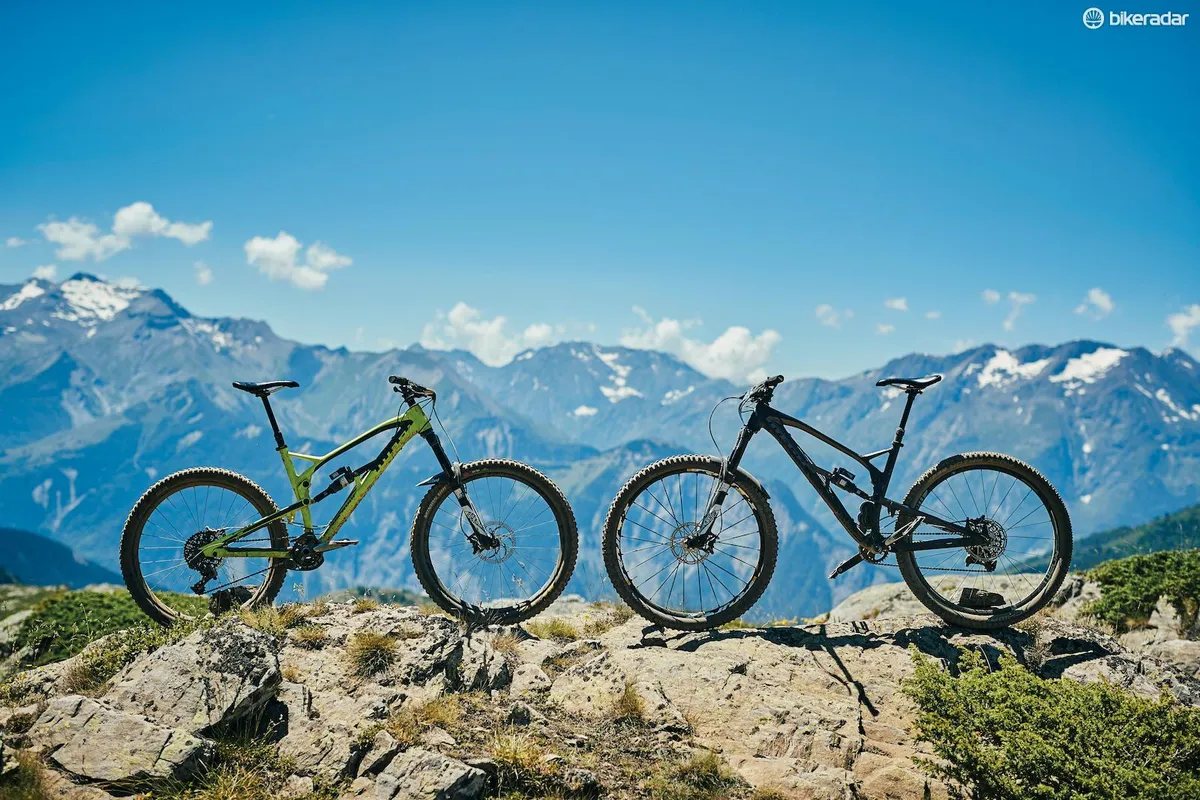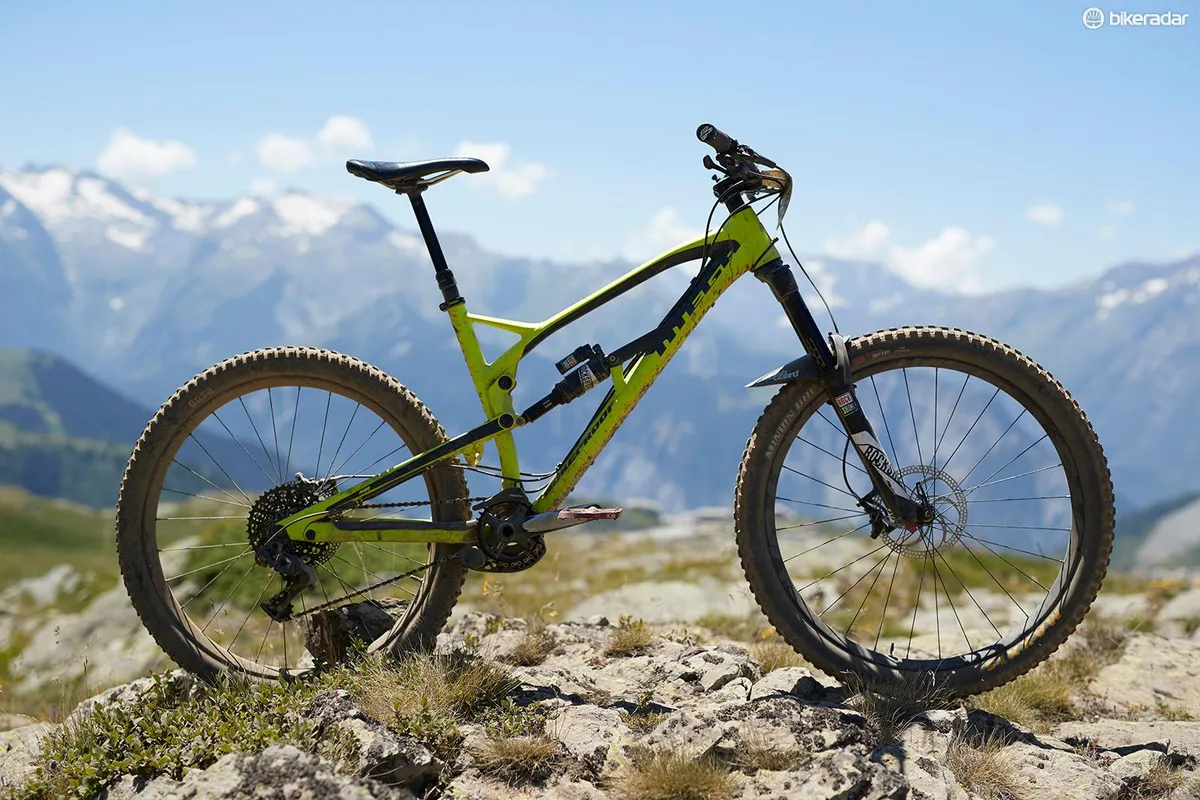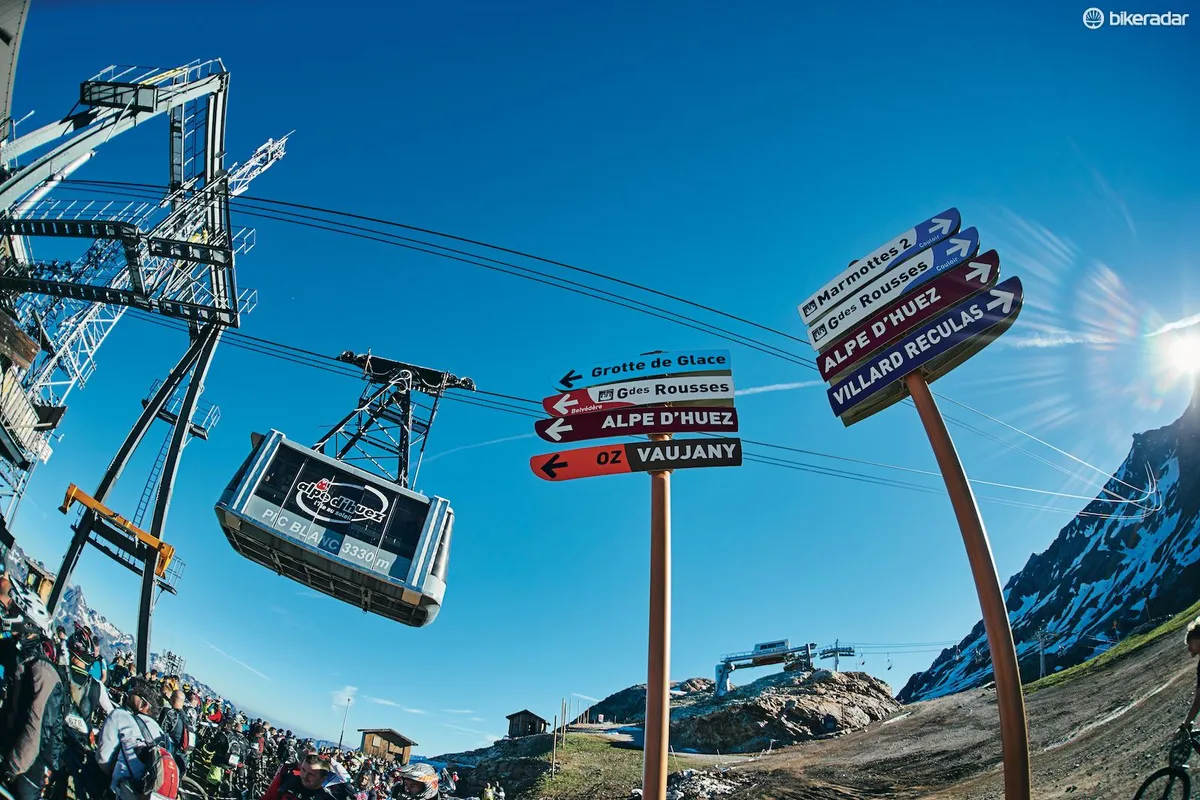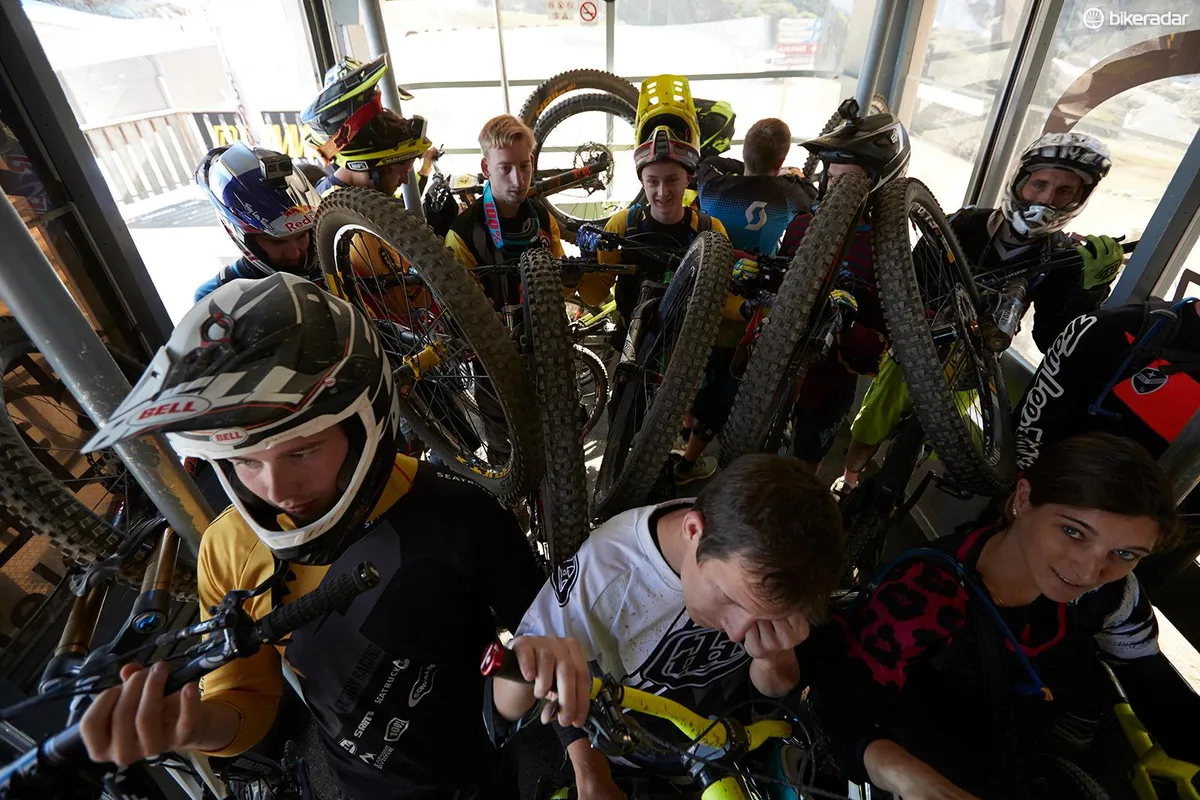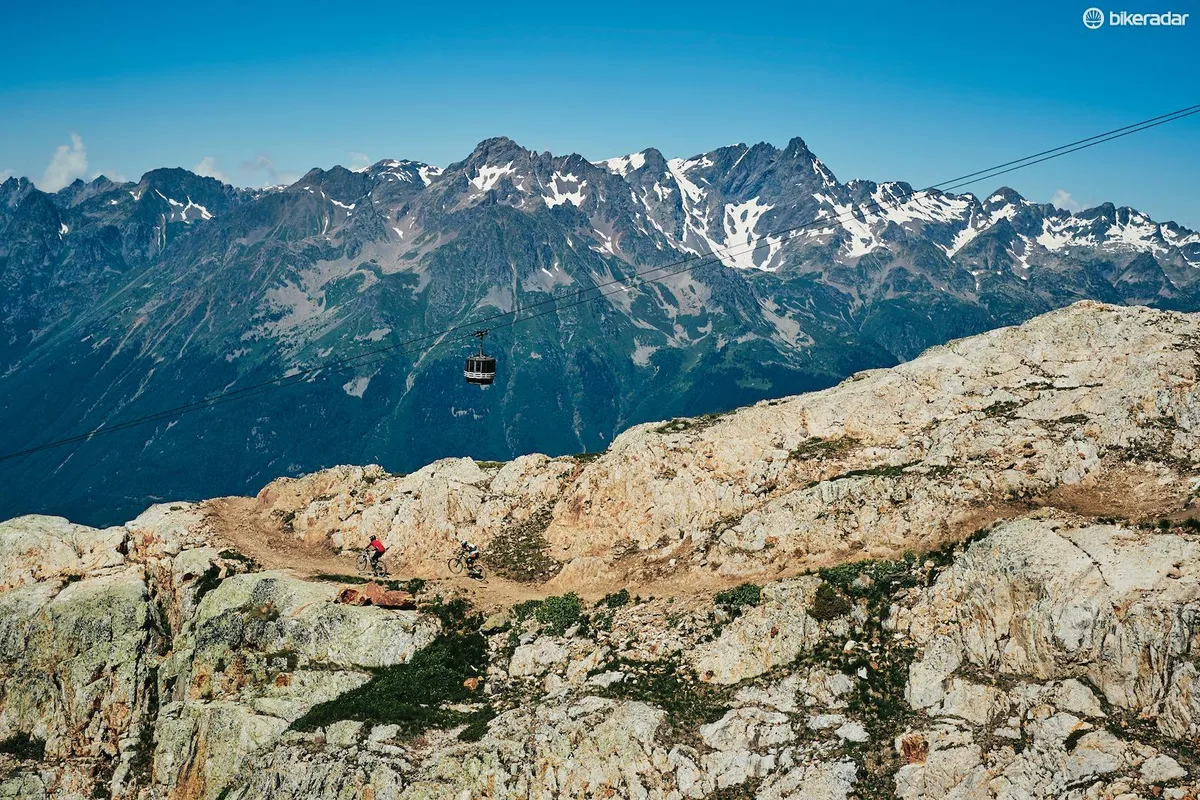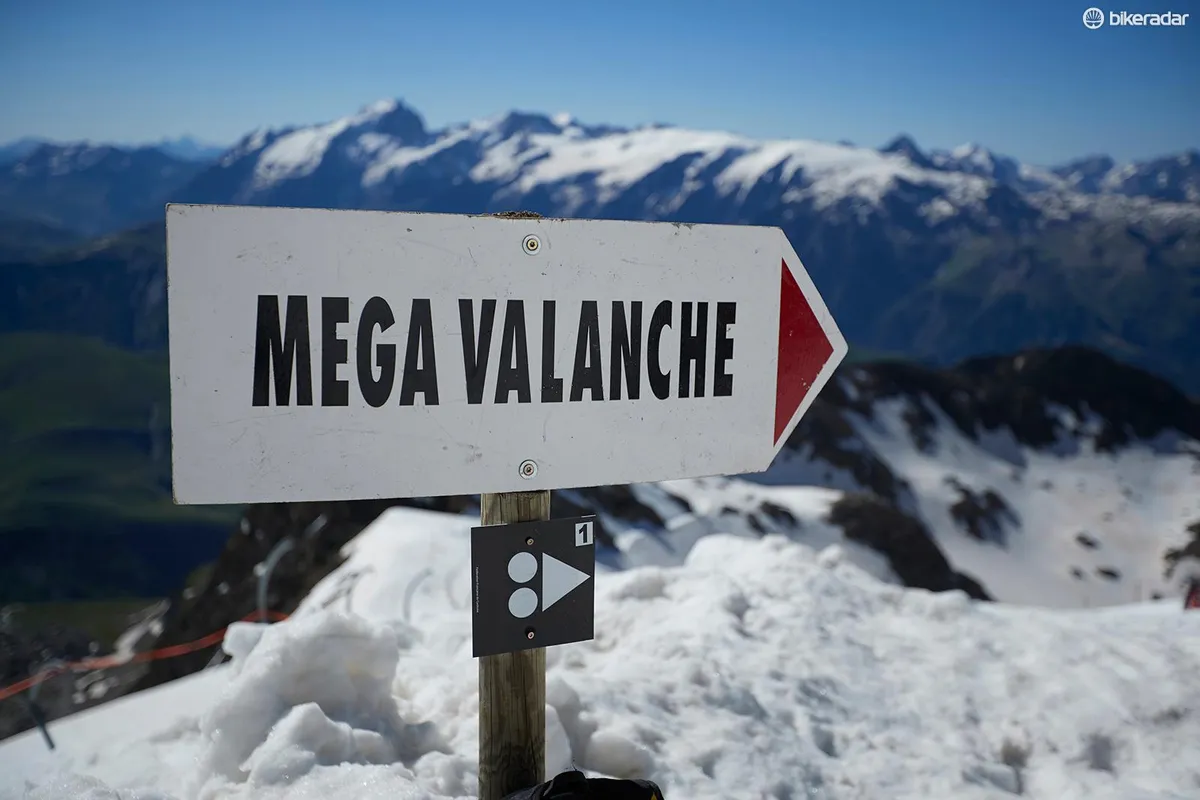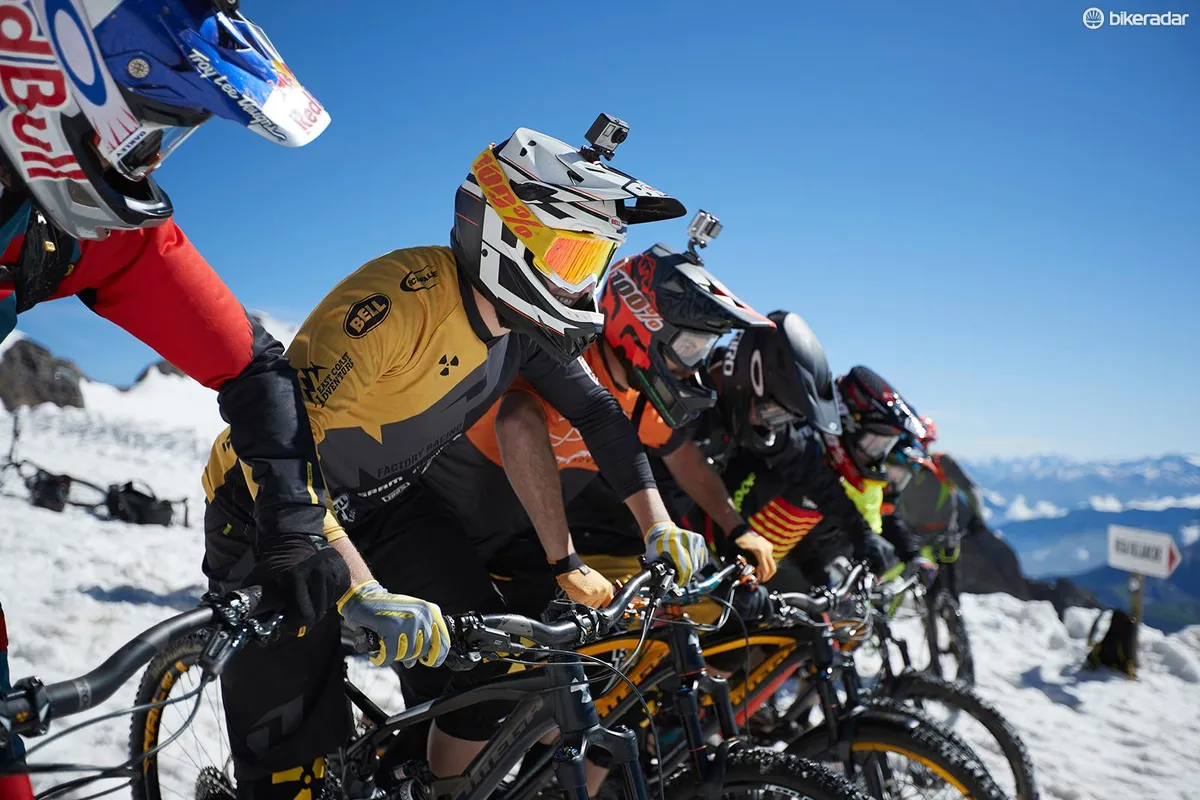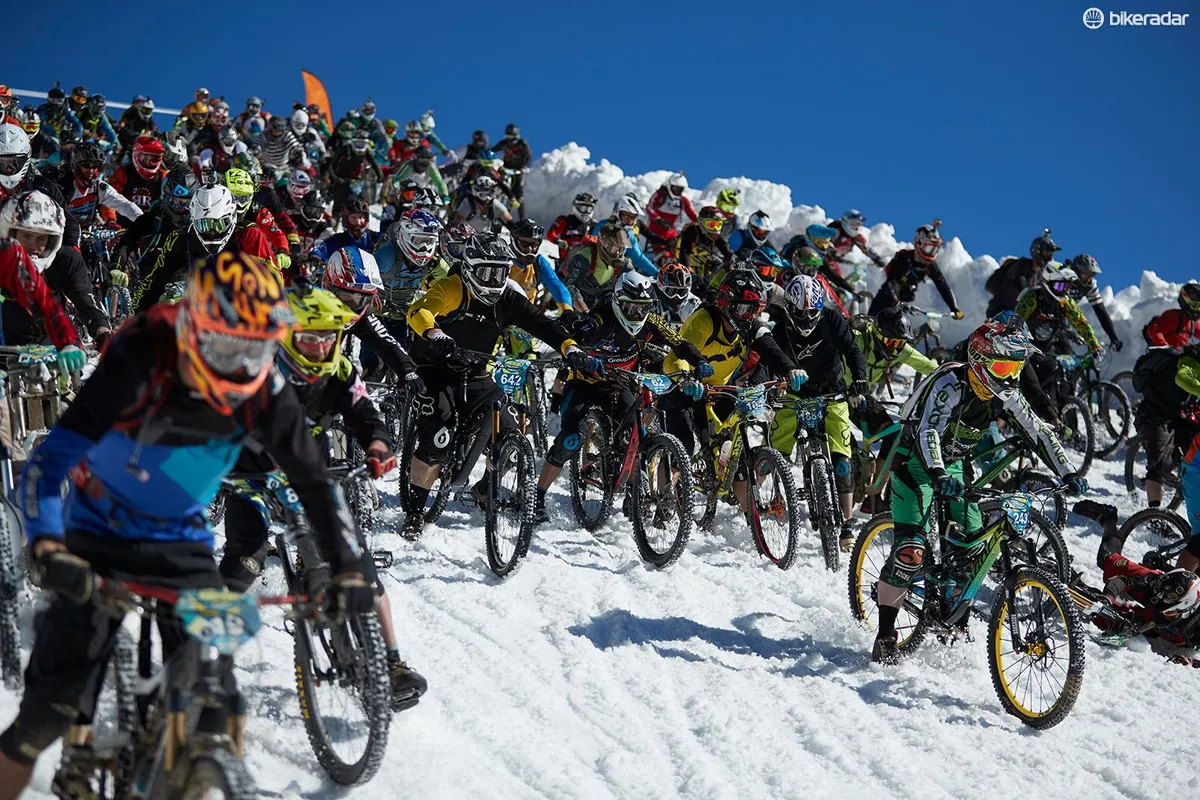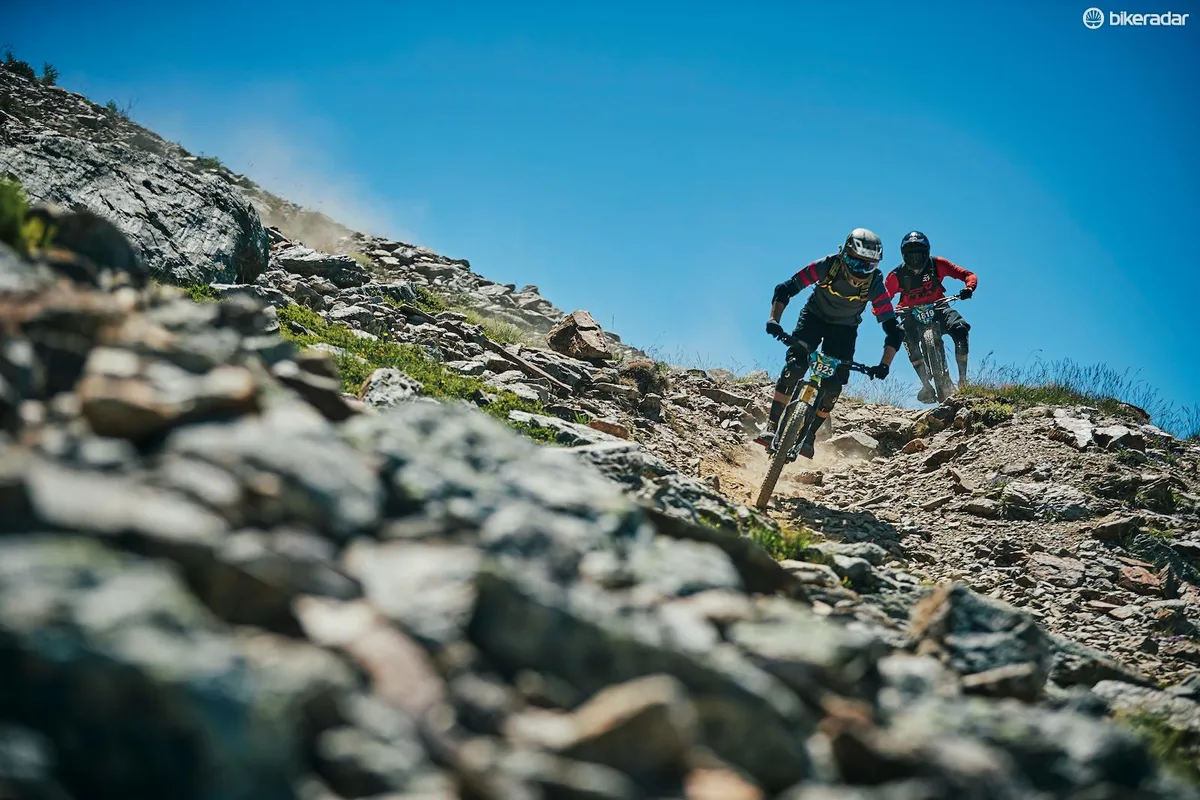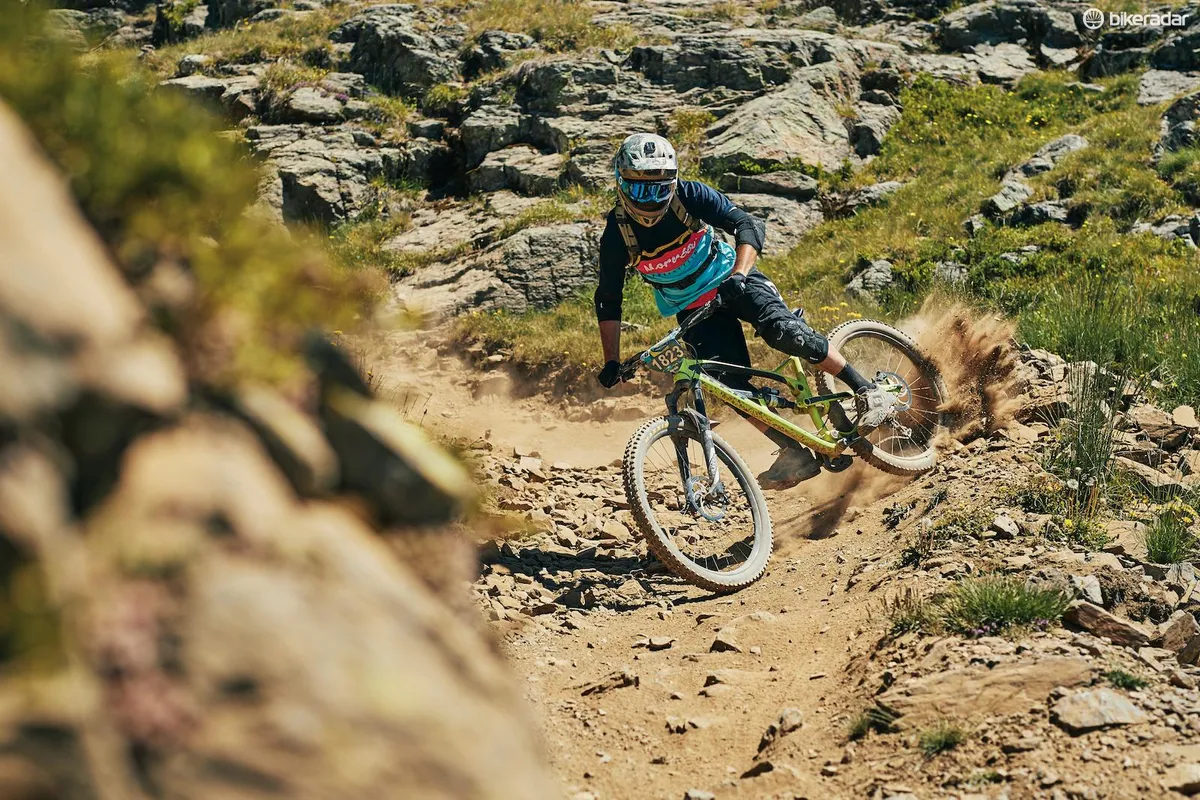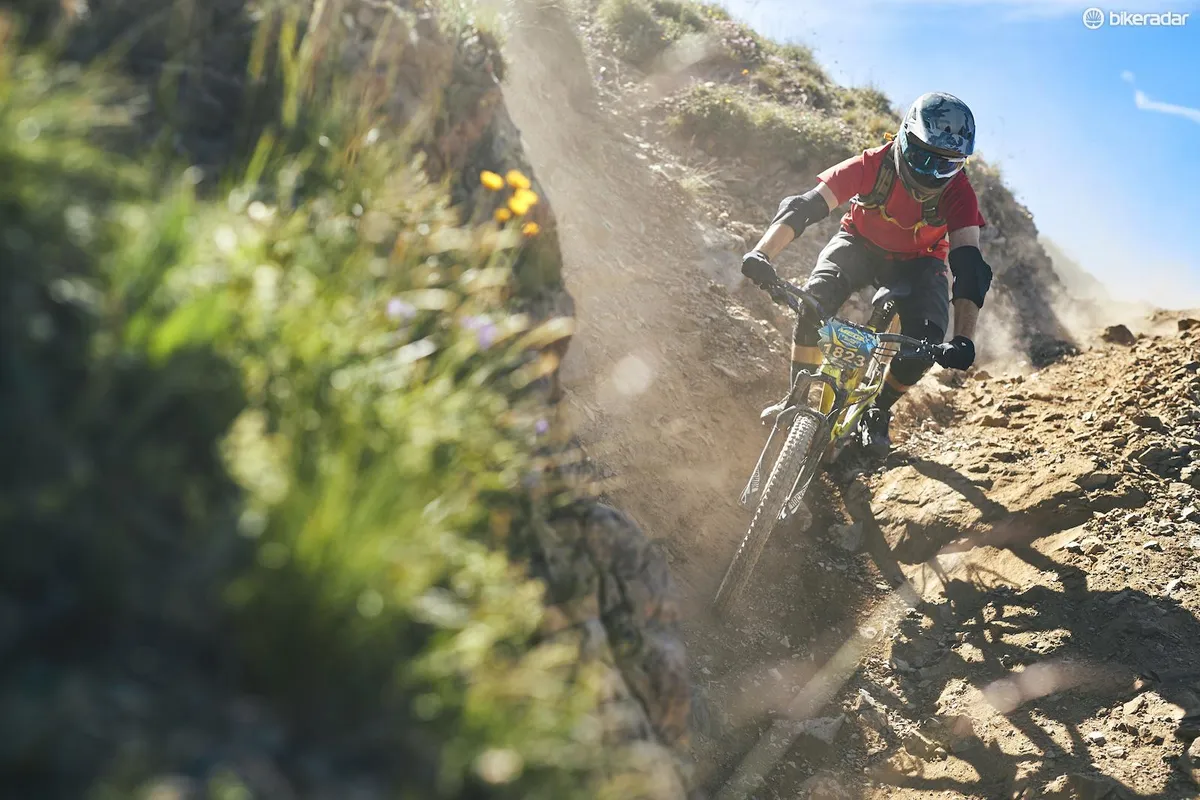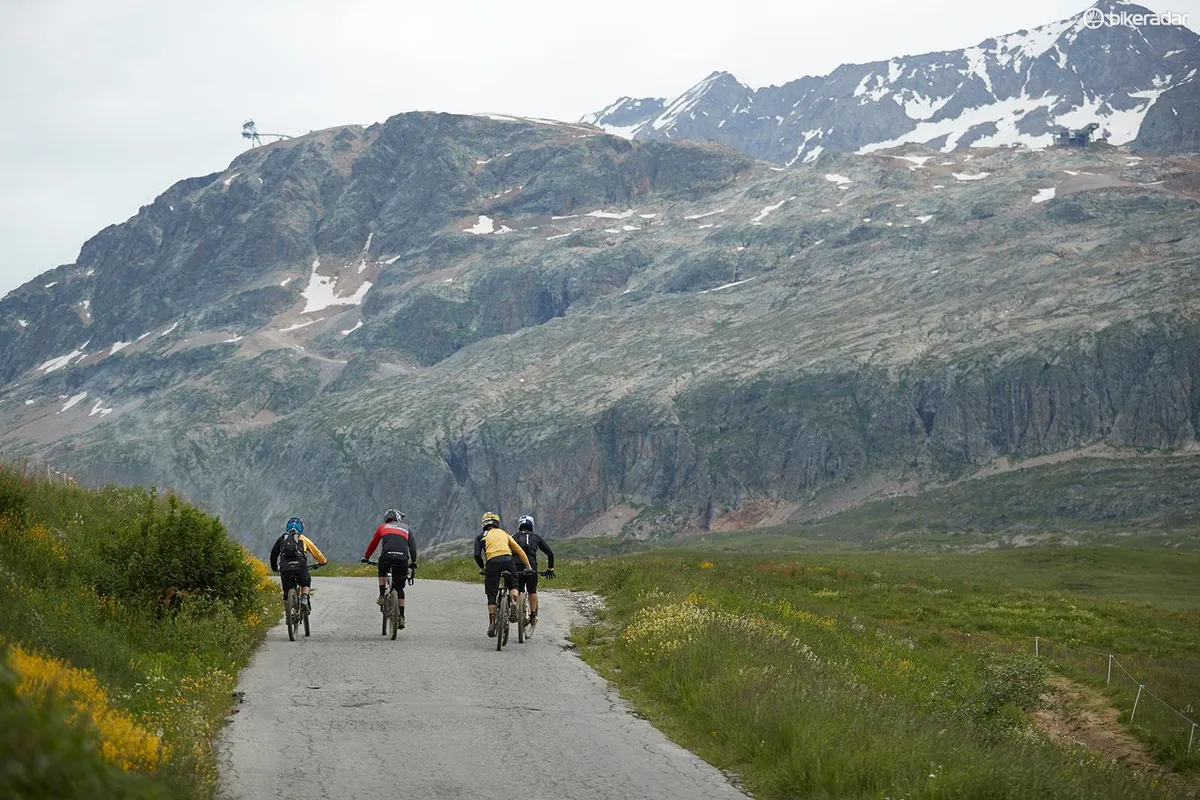The Megavalanche is one of the few mountain bike races where you need luck, skill, fitness and confidence in equal measure. Conquering the snow and ice, rocks and roots and torturous climbs that pave the way takes a special type of person and machine. Finding a bike that climbs as well as it descends is a veritable rainbow-farting, five-legged unicorn of a bike and can only go some way to making up the shortfall if you’re not one of the aforementioned special types.
Ed and I were both signed up to compete at the 2016 Megavalanche. Ed, having raced the torturous event before knew what was in store — a lot of, quite frankly, mental bike riding. I, on the other hand, was a bit of a newbie and an internet aficionado; “how hard can it be?” was one of the loosely and thoughtlessly thrown about questions that came out of my mouth. Having now completed the event I can answer that question, “bloody hard”.
To make things interesting, Ed and I both opted to ride Nukeproof Mega bikes. The only variable we decided would be wheel size in an attempt to find out which one would dominate when things got rough and wild.
Ed opted for the 29-inch 290 model and I was riding my long-term 27.5-wheeled bike, hoping that knowing the bike may offset any disadvantages that the smaller wheels may bring.
- The course: 21km of grueling trail that starts on top of Pic Blanc above Alpe d’Huez, 3300m above sea level. The track begins on a glacier that transitions on to dusty and rocky natural singletrack, this then winds down the mountain through a root-filled conifer forest and spits you out at 800m. It’s quite a ride.
- The equipment goal: discovering which wheel size would ace the climbs, sail over the holes and dodge the rocks and roots that litter the trail.
- The horse: Nukeproof Mega 275 and 290 Pro full bike build kits, featuring Rockshox Pike forks, Reverb Stealths, SRAM Guide RS brakes X1 11-speed drivetrain. There was little difference between the bikes, bar wheel size.
See how the Al and Ed got on qualifying and racing the Megavalanche
Alex’s diary
Swinging a leg over my bike at 3,300m should have been a comforting feeling. I’ve learnt the ins and outs of the 275 Mega and felt at home riding the bike at, yep you guessed it, home. This wasn’t quite the case in Alpe d’Huez — so much so, I felt overwhelmed sitting on the start line with over 300 other riders surrounding me. So far, though, none of this was the bike’s fault.
The only changes I made to my bike were reversible set up changes, rather than massive component changes. I increased the fork pressure to 97psi with two bottomless tokens, and upped the tyre pressure from around 26psi to 29.1psi in the front and from 28psi to 31.9psi out back. The SRAM Guide brakes were fitted with some fully sintered pads, ready to take on all the abuse I could throw at them.

So how did the 27.5-inch wheels handle the riding? On the snow, which had melted by the time we set off, only a fat bike would have offered any kind of advantage over the smaller wheel sizes. I didn't feel, at least so far, that a 29er could have helped my rather pathetic and floundering attempt to competitively race the glacier.
Further down the track the snow gave way to a boulder-filled gnar-fest with big holes, bigger rocks and high speeds. It was at this point when my bike felt a little under-wheeled, but not overwhelmed. With the higher speeds and tough riding conditions, I felt a bigger wheeled bike would have given me an advantage over the smaller one.
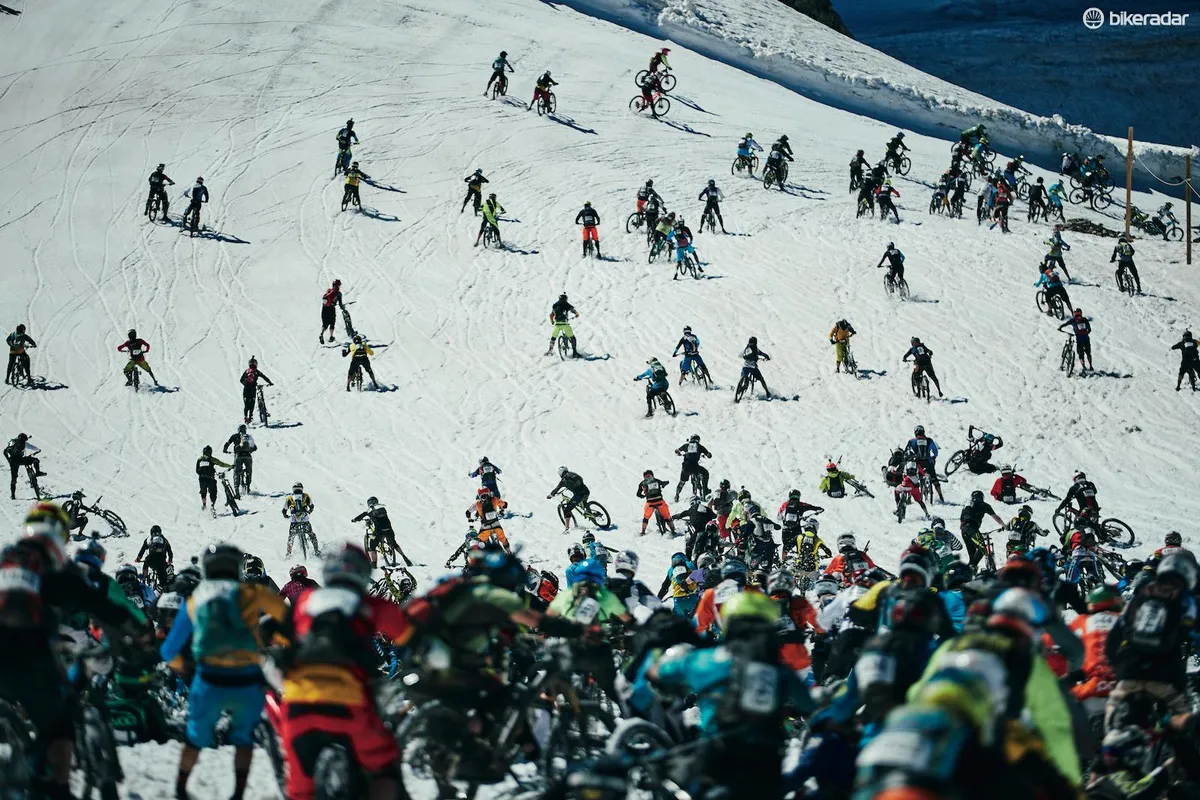
Removing trail chatter, smoothing undulations and being less affected by the rocky terrain I am fairly confident the 29er would have been the ideal bike for the upper, almost lunar-esque, sections of trail. After riding the top section of track and receiving an upper body-pounding equivalent to a meathead’s gym session, you’re confronted with what feels like a brick wall.
Realistically, it’s a modest 100m vertical climb spread across 1km, but after riding flat-out your heart rate is already in the upper limits of strained, so the innocuous (on paper at least) climb quickly becomes a hefty challenge. Once again, a 29er would have helped here — the bigger wheels are awesome at gliding up hills. The Mega 275 wasn’t bad at climbing, but it just isn’t as good as a 29er.
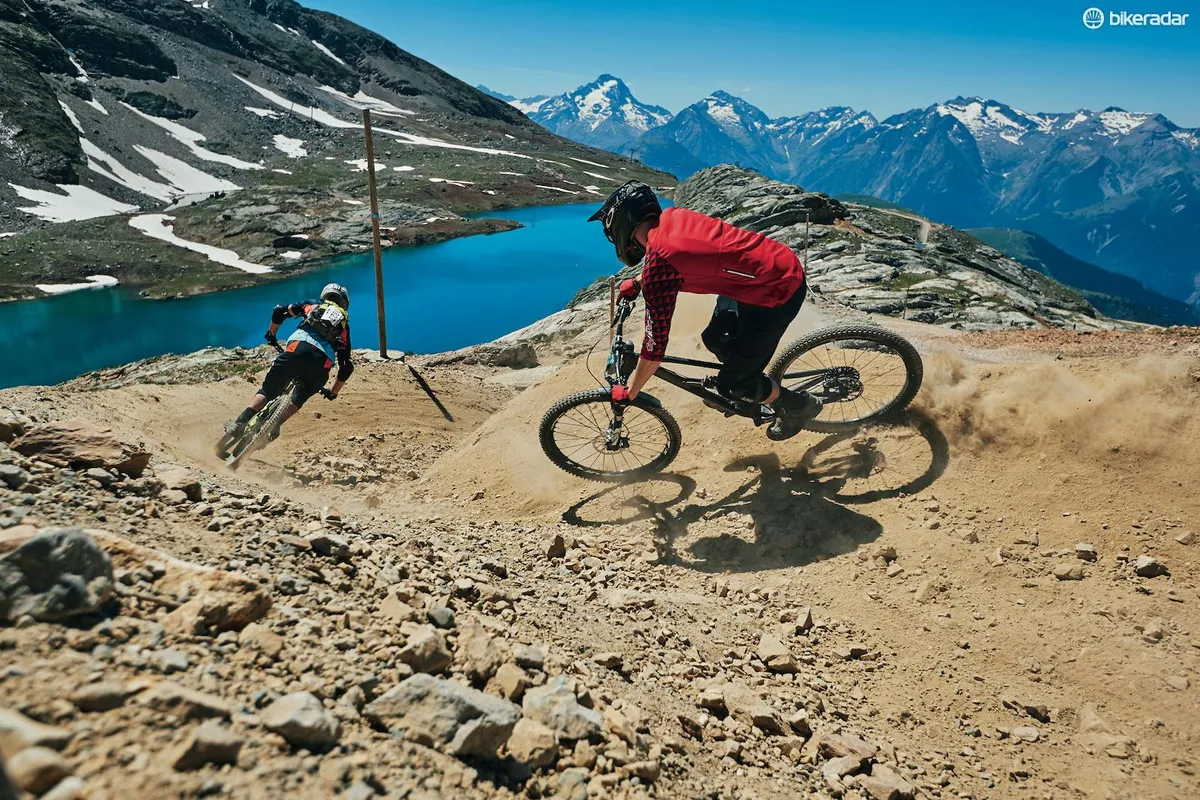
However, heading towards the final and very long descent down to Allemond from Alpe d’Huez I was confident that the 275 was just the ticket. Tight turns, rooty straights and technical sections were the order of the day here. The Mega 275, with its DH bike-like sizing and geometry was just the ticket. The 27.5in wheels were a perfect balance between flickable and stable, and the bike really came alive in the wooded turns.
A 29er wouldn’t have been much slower, but the slightly larger wheels certainly would have made the tight sections a little more challenging.
So was I happy with my horse for the course? I certainly was. Would I use the 275 again? Well, if I were to race the Mega again I’d go for the 29er. The fast, rocky and loose sections would be considerably easier on the 29er and you could out-ride the slightly slower ride characteristics on the tighter bits of trail.
Ed’s diary
Coming into the Mega, Al and my starting points were polar opposites. He was riding a familiar bike, but had no experience of the terrain, I knew what to expect but had never swung a leg over a Nukeproof Mega, or a 29er for that matter!
Arriving in Alpe d’Huez, I pulled the bike out of the van and did some high-tech car park testing; bouncing the suspension and pulling a few wheelies. After this, I spent a little while adjusting the suspension for the high speeds and rough terrain, settling for a bit less sag than usual, 15 percent at the front and 20 percent at the back.
Size wise, as a six-foot tall rider, the 460mm reach on the large Mega 290 was good, but the front-end felt quite high for someone not used to the large wheels. Once I’d put on some low 20mm rise bars and slammed the stem, I reckoned it was good to go.
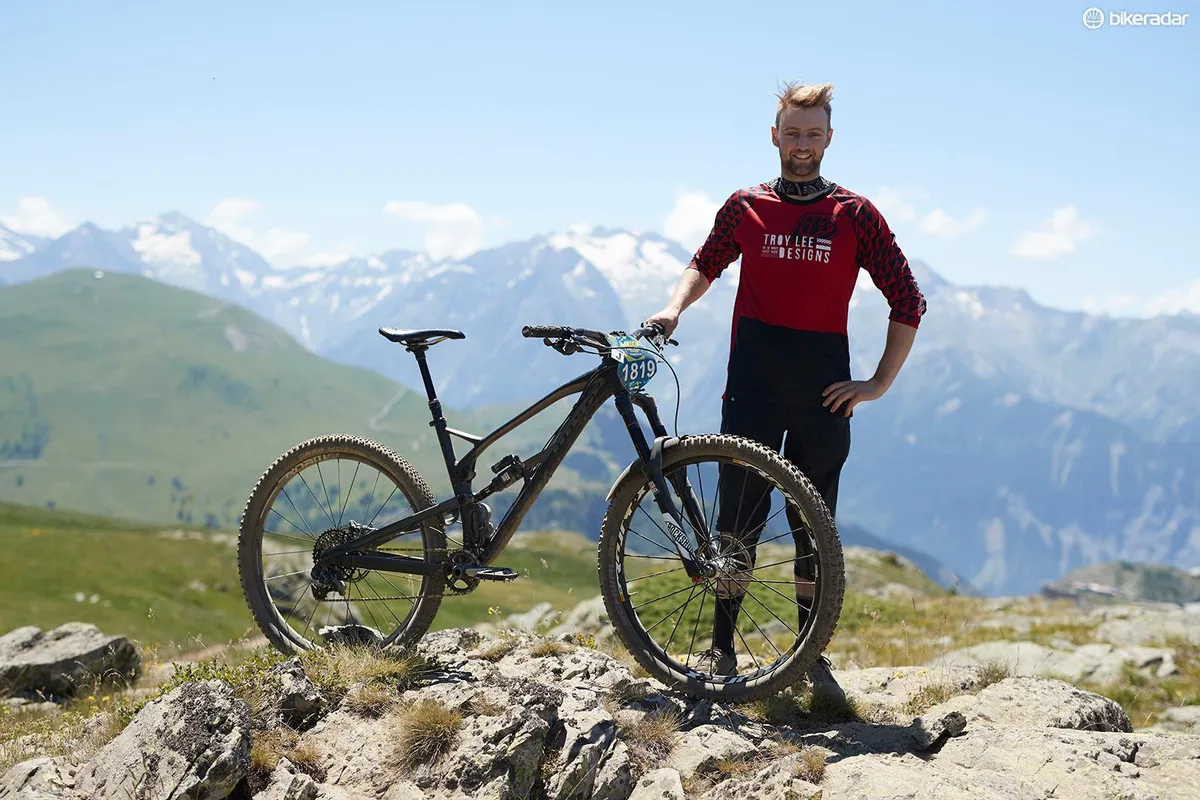
In practice it took me a little while to get a feel for the Mega 290. It was noticeably faster than my usual 27.5-inch bike on the straights, but it felt a bit unwieldy through the turns. What I came to realise was just how much grip the big wheels have and therefore how much you can lean the bike over without it sliding out. I found I was under steering in the turns as the wheels weren’t breaking traction where I thought they would.
Once I got the hang of this it felt as though I’d put a throttle on the bars; the bike just wanted to go faster and didn’t seem phased by loose rocks that would normally sap your speed.

So on to the racing. Normally in a race run, when you’re pushing your riding skills to the limit, there are loads of moments where the bike cuts loose and is on the edge of control. With a race like the Mega, there’s no way your fitness can sustain riding 100 percent over the duration, not to mention that with limited practice, it’s almost guaranteed to end in a crash. You’ve got to tone things down a bit, push it where you can, but conserve energy for hitting the pedals out of turns and sprinting for an opportune overtake and of course the midway climb out of Alpe d’Huez. This is where a 29er comes into its own; it's longer, more predictable to ride and lets you save energy for where you need it.
The snow and upper sections of the track are where the race is won or lost and here I’d say there’s no question that the 29er is the bike to go for
In the upper sections of the track where the terrain is fast, rocky and rough, I found, as I had in practice, that the 290 was lapping it up. But it was lower down, in the forests towards the race finish, that I felt the limitations of the 29er. It was on the gullied-out switchbacks and tight turns around the trees that I felt a bit awkward, perched on top of the big-wheeled bike.
Having said that, when you consider the race as a whole, basing your bike choice on this section would be foolish. By the time you get here your arms are pumped, you’re gasping for air and are probably stuck behind other riders.
The snow and upper sections of the track are where the race is won or lost and here I’d say there’s no question that the 29er is the bike to go for. I don’t think there’s a bike on earth that excels at riding rutted, slushy snow. Maybe a fat bike, but I’ll eat my helmet if anyone turns up at the Mega and wins on one of those!
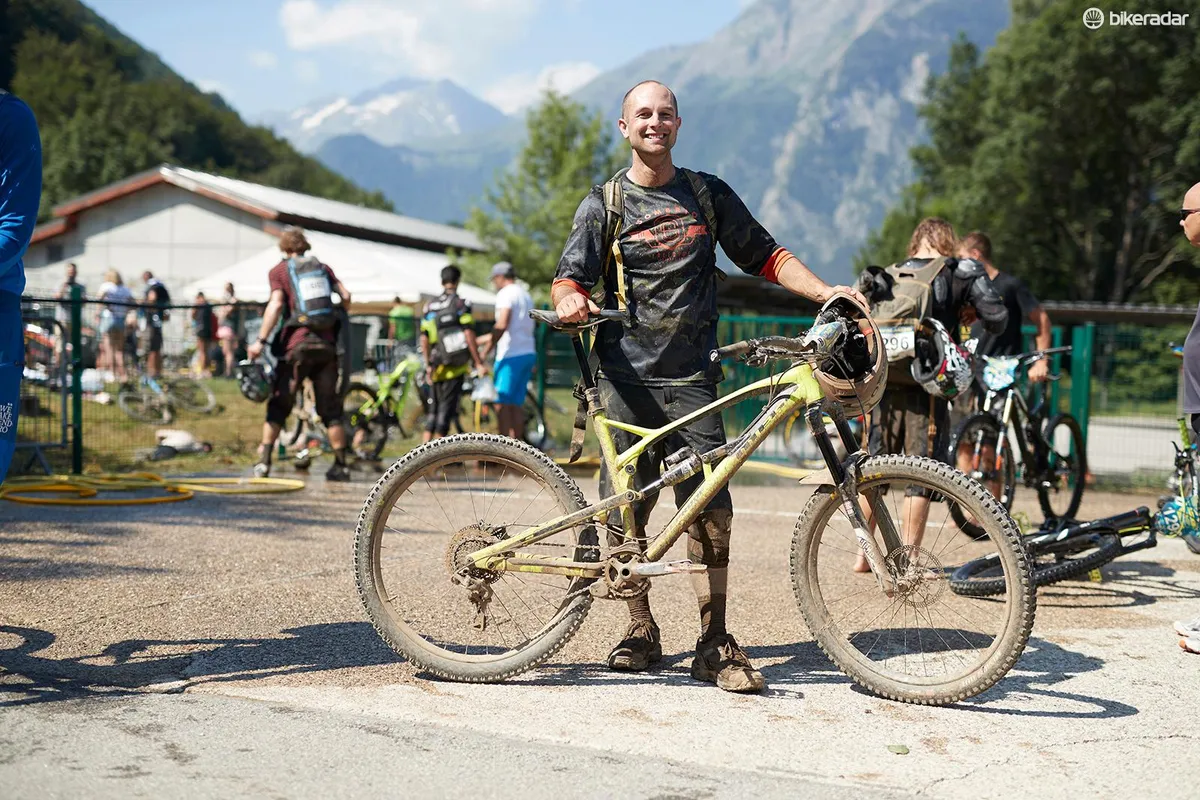
Summary
So it looks like both Ed and I have arrived at the same conclusion: the Mega 290, 29-inch wheeled bike is the bike to ride at the Megavalanche.
Retailing for £3,199 / US$3,199 / AU$5,813, the Nukeproof Mega represents great value for money with its top-spec parts.
